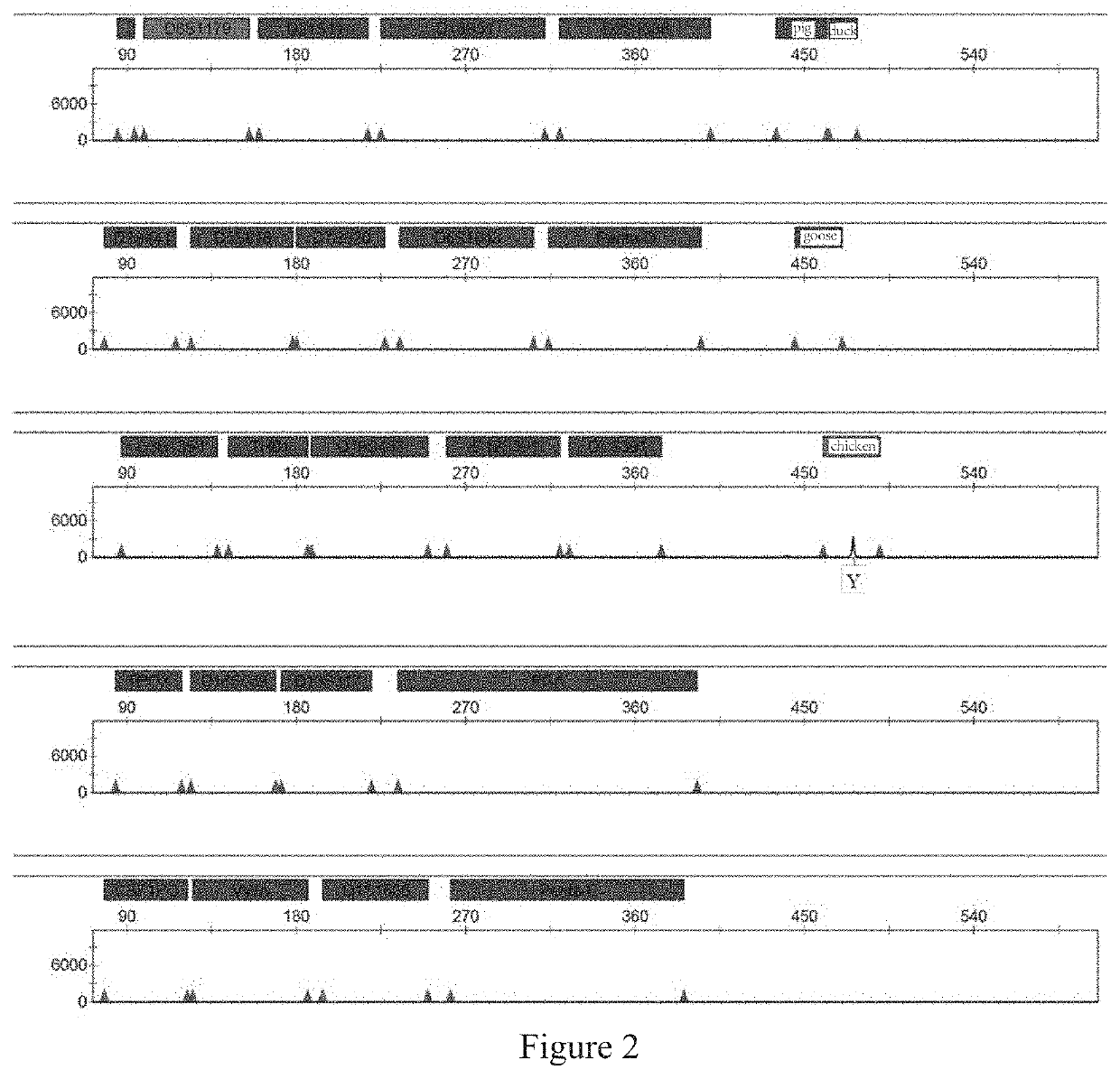Multiplex PCR amplification method for species and human individual recognition and identification of unknown biological sample suspected to be from human
a pcr and amplification technology, applied in the field of multi-pcr amplification, can solve the problems of poor stability, sample source affected by the environment, sample with lower content or even loss of human-derived dna, etc., and achieves the effect of avoiding waste of resources, high specificity, and high sensitivity
- Summary
- Abstract
- Description
- Claims
- Application Information
AI Technical Summary
Benefits of technology
Problems solved by technology
Method used
Image
Examples
example 1
Determination of Non-Human Species and Specific-sequences
[0158]In the practical identification application, contamination by non-human species is primarily caused by ordinary animals in urban and rural areas. Thus, four ordinary non-human species (namely, chickens, ducks, geese and pigs) that are readily available are selected for use in the present application. Sequences of the same gene in each species are selected from the database of NCBI as the detected sequence. By aligning these sequences, a specific region on ATP5B is selected and experimentally verified.
example 2
Determination of Genetic Markers of Human Chromosomal DNAs
[0159]In the present invention, the following 22 human chromosomal STR loci are determined by screening: D3S1358, TH01, D21S11, D18S51, Penta E, D12S391, D6S1043, D2S1338, D1S1656, D5S818, D13S317, D7S820, D19S433, CSF1PO, Penta D, vWA, D8S1179, TPDX, FGA, D2S441, D16S539 and DYS391, as well as a gender recognition site Amel (non-STR locus); wherein DYS391, a core site in the China National GeneBank DataBase and a gender recognition site located on chromosome Y, is used for auxiliary sex determination.
example 3
Design of a Combined Scheme of Fluorescently-Labeled Multiplex Amplification System
[0160]Six-color fluorescent labels (namely, blue, green, yellow, red, purple, and orange labels) were selected for use in the present invention after discriminating and screening fluorescent dyes to construct a combined scheme of six-color fluorescence. When the combined scheme of six-color fluorescence had been determined, the combination of loci and types of the fluorescent labels were designed through numerous repeated experiments. Based on the production costs and the amplification efficiency of the primers for each locus, the above loci were divided into five groups:
[0161]the first group: Amel, D8S1179, D21S11, D18S51, D2S1338, pig and duck ATP5B-specific regions, using FAM labels;
[0162]the second group: D2S441, D5S818, D7S820, D6S1043, Penta D and a goose ATP5B-specific region, using HEX labels;
[0163]the third group: D3S1358, TH01, D19S433, D12S391, DYS391 and a chicken ATP5B-specific region, us...
PUM
| Property | Measurement | Unit |
|---|---|---|
| temperature | aaaaa | aaaaa |
| sizes | aaaaa | aaaaa |
| polyacrylamide gel electrophoresis | aaaaa | aaaaa |
Abstract
Description
Claims
Application Information
 Login to View More
Login to View More - R&D
- Intellectual Property
- Life Sciences
- Materials
- Tech Scout
- Unparalleled Data Quality
- Higher Quality Content
- 60% Fewer Hallucinations
Browse by: Latest US Patents, China's latest patents, Technical Efficacy Thesaurus, Application Domain, Technology Topic, Popular Technical Reports.
© 2025 PatSnap. All rights reserved.Legal|Privacy policy|Modern Slavery Act Transparency Statement|Sitemap|About US| Contact US: help@patsnap.com



